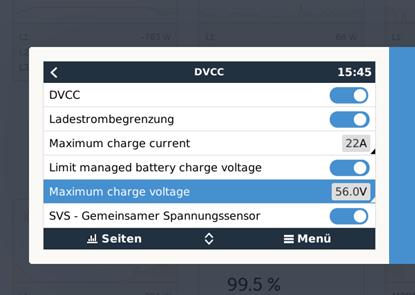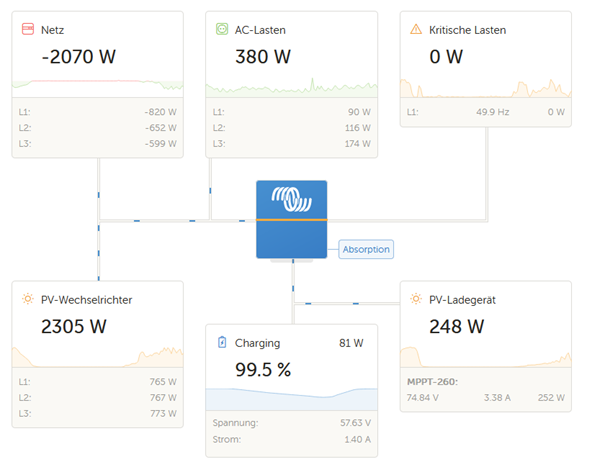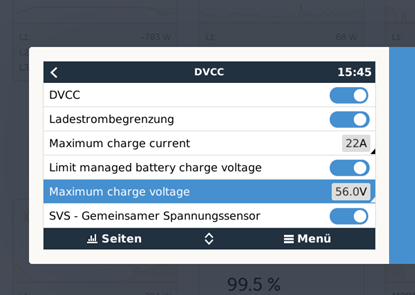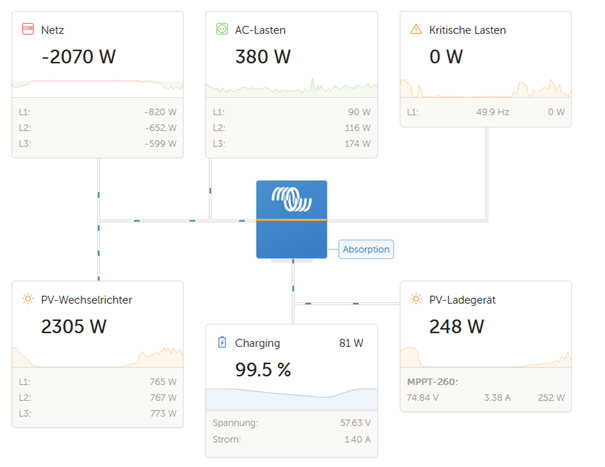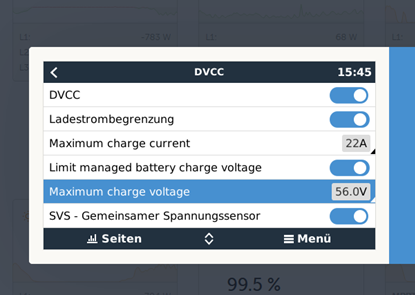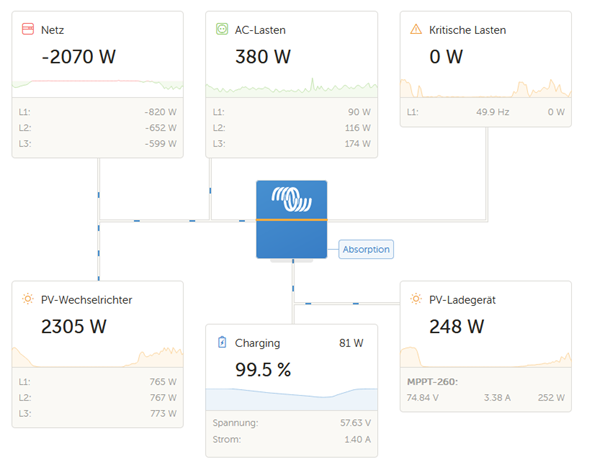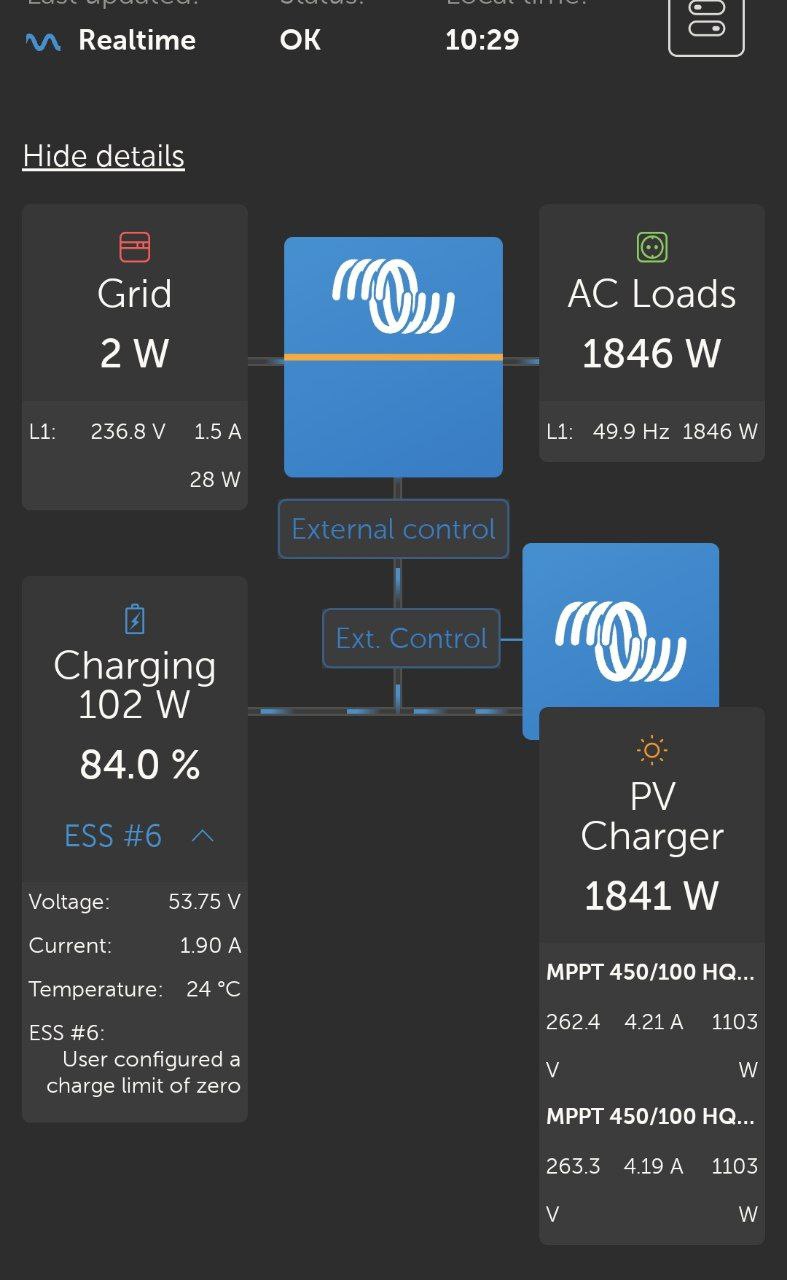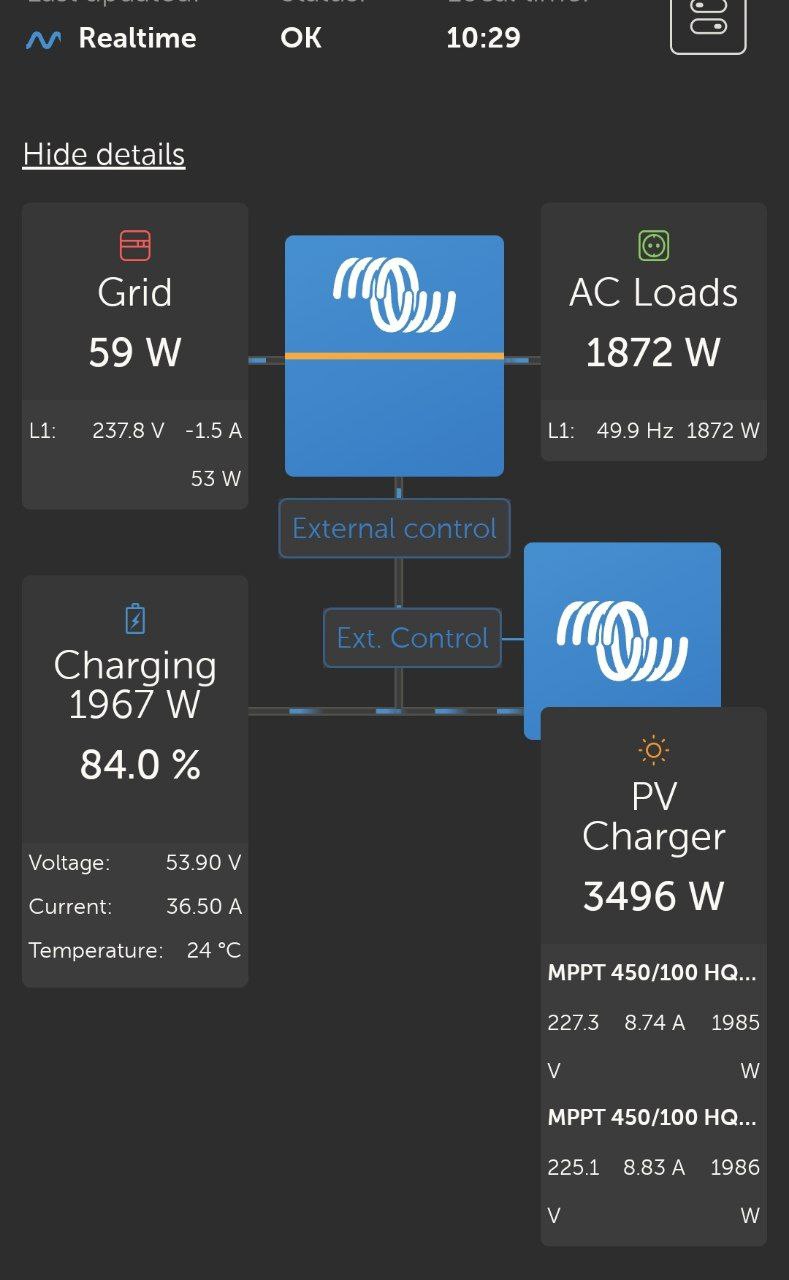Hello,
there is a very very important feature missing in the victron ESS settings. You can set a MIN SOC, which is great in winter, to let the battery not stay a long time on a bad low voltage.
But there is no MAX SOC setting, which is more important. In sommer times, the battery is almost always full, this is the worst voltage setting and the battery wear of the battery is high. Nothing is worse than sommer with full battery and high temperatures. Every normal user would like to restrict the MAX SOC in summer, there is no such feature in ESS settings. I cannot explain my customers, why this does not exist in the great Victron world, where you can do almost everything, but not one of the most important settings.
Next: In times like today, where the average person gets more money for selling energy than it costs (buying contracts least a year for change, selling contracts are mostly the average price of the last three months) nobody wants to store the energy in the battery, customers need a setting to bypass the battery with a MAX SOC setting, e.g. 50%. Than the battery can do a kind of sleep, during months where energy sales prices are very high.
Next: I changed the control of my Victron system by external NodeRed programming to not regulate the grid connection to ZERO, for optimizing the own energy usage, but at that time i regulate the Multiplus System to get ZERO at the battery, this is the best way to bypass the battery to sell as much energy as possbile.
Those are two very simple features, that are very important for the VALUE of Victron ESS: 1. MAX SOC setting, 2. MIN Battery usage regluation.
I tried to set the grid setpoint to a high minus value, but this is not a usable solution.
Please check this CHANGE REQUEST, I cannot program for every customer an external control.

 unfortunately i have a problem with the dvcc max voltage charging setting, it does not work, tried it today and tried it much earlier, for any reason it is not working satisfying see picture from today:
unfortunately i have a problem with the dvcc max voltage charging setting, it does not work, tried it today and tried it much earlier, for any reason it is not working satisfying see picture from today: